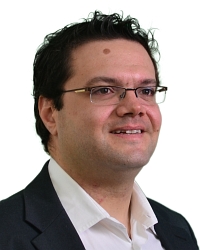TR2011-049
Democracy in Action: Quantization, Saturation and Compressive Sensing
-
- , "Democracy in Action: Quantization, Saturation and Compressive Sensing", Applied and Computational Harmonic Analysis, Vol. 31, No. 3, pp. 429-443, November 2011.BibTeX TR2011-049 PDF
- @article{Laska2011nov,
- author = {Laska, J.N. and Boufounos, P.T. and Davenport, M.A. and Baraniuk, R.G.},
- title = {{Democracy in Action: Quantization, Saturation and Compressive Sensing}},
- journal = {Applied and Computational Harmonic Analysis},
- year = 2011,
- volume = 31,
- number = 3,
- pages = {429--443},
- month = nov,
- url = {https://www.merl.com/publications/TR2011-049}
- }
- , "Democracy in Action: Quantization, Saturation and Compressive Sensing", Applied and Computational Harmonic Analysis, Vol. 31, No. 3, pp. 429-443, November 2011.
-
MERL Contact:
-
Research Area:
Abstract:
Recent theoretical developments in the area of compressive sensing (CS) have the potential to significantly extend the capabilities of digital data acquisition systems such as analog-to-digital converters and digital imagers in certain applications. To date, most of the CS literature has been devoted to studying the recovery of sparse signals from a small number of linear measurements. In this paper, we study more practical CS systems where the measurements are quantized to a finite number of bits; in such systems some of the measurements typically saturate, causing significant nonlinearity and potentially unbounded errors. We develop two general approaches to sparse signal recovery in the face of saturation error. The first approach merely rejects saturated measurements; the second approach factors them into a conventional CS recovery algorithm via convex consistency constraints. To prove that both approaches are capable of stable signal recovery, we exploit the heretofore relatively unexplored property that many CS measurement systems are democratic, in that each measurement carries roughly the same amount of information about the signal being acquired. A series of computational experiments indicate that the signal acquisition error is minimized when a significant fraction of the CS measurements are allowed to saturate (10-30% in our experiments). This challenges the conventional wisdom of both conventional sampling and CS.
Related News & Events
-
NEWS Applied and Computational Harmonic Analysis: publication by Petros T. Boufounos and others Date: November 1, 2011
Where: Applied and Computational Harmonic Analysis
MERL Contact: Petros T. Boufounos
Research Area: Computational SensingBrief- The article "Democracy in Action: Quantization, Saturation and Compressive Sensing" by Laska, J.N., Boufounos, P.T., Davenport, M.A. and Baraniuk, R.G. was published in Applied and Computational Harmonic Analysis.
